Key Performance Indicators (KPIs) serve as the backbone of strategic decision-making across all industries. Across all organizations, KPIs provide a clear, data-driven framework to track progress, identify inefficiencies and optimize operations. In healthcare, the stakes are even higher—KPIs not only determine financial success but directly impact patient well-being.
Accountable Care Organizations (ACOs) thrive with an eye for precision. The overall success of the ACO hinges on measuring, analyzing and acting on KPIs that drive financial stability, ensure favorable patient outcomes and position the organization for overall operational efficiency. Data-informed decisions separate high-performing organizations from those struggling to manage costs and outcomes.
By leveraging KPI metrics, ACOs ensure resources are allocated effectively, interventions are timely and overall performance aligns with both regulatory requirements and quality benchmarks. Without a firm grasp on these metrics, ACOs risk their ultimate indicator of success – the ability to achieve shared savings.
Let’s look at these 12 KPIs every ACO must measure to optimize their quest for shared savings:
Finance
Financial performance is the foundation of ACO sustainability. Without a clear picture of where dollars are spent and how those expenditures compare to industry and internal benchmarks, organizations risk inefficiencies that drive up costs and erode shared savings. Strong financial KPIs help ACOs identify spending patterns, reduce waste and optimize cost-effective care.
- Spend per Patient per Year (PMPY) vs. Benchmarking
Financial sustainability starts with knowing where an ACO stands. Comparing PMPY spend against benchmarks reveals inefficiencies and opportunities to curb excessive costs while maintaining care quality.
Risk
Risk assessment is essential for predicting costs, adjusting care strategies and ensuring proper reimbursement. ACOs need a firm understanding of their patient population’s health risk levels to manage resources effectively and prevent financial shortfalls. The more accurately risk is measured, the better an ACO can anticipate patient needs and deploy proactive interventions.
- Current Risk Scoring Across Patient Populations
Understanding risk across the entire patient population and within specific cohorts allows ACOs to anticipate care needs and resource allocation, ensuring risk-adjusted payments align with actual patient acuity.
Attribution
Attribution is about knowing who your patients are and ensuring they receive consistent, coordinated care within the ACO. Proper patient attribution allows organizations to optimize care management, improve patient outcomes and maintain financial stability. Without accurate attribution, ACOs struggle with gaps in care and financial unpredictability.
- Patient Attribution to ACO, TIN and NPI
Accurate attribution ensures proper alignment of care responsibilities and financial incentives. ACOs need clear visibility into which providers and facilities are accountable for patient care. - Percentage of Continuously Attributed Patients
A high percentage of continuously attributed patients signals strong patient engagement, continuity of care and reduced churn—factors that directly impact financial predictability. - Percentage of Beneficiaries Seen Per Quarter for Primary Care Services
This metric reflects how well an ACO engages its patient population. A higher percentage correlates with improved preventive care, lower avoidable utilization and better long-term health outcomes.
Quality
Quality metrics define an ACO’s ability to deliver effective, patient-centered care. These KPIs track preventive measures, chronic disease management and the closure of care gaps, all of which contribute to improved health outcomes and shared savings. Prioritizing quality leads to better patient engagement, fewer complications and lower overall costs.
- Annual Wellness Visit Completion Rate
Annual wellness visits serve as the foundation for preventive care and early intervention. Tracking completion rates ensure patients receive necessary screenings, risk assessments and personalized prevention plans. - Additional Care Gap Closures
Every unresolved care gap is a missed opportunity to improve outcomes and reduce costs. ACOs must measure how effectively they close gaps related to chronic conditions, vaccinations and evidence-based screenings.
Utilization
Utilization metrics highlight how patients interact with the healthcare system. By tracking utilization trends, ACOs can identify overuse of costly services, reduce avoidable hospitalizations and improve care coordination. These KPIs ensure patients receive the right care at the right time while keeping costs under control.
- Percentage Change of Visits per 1,000
ACO success depends on reducing avoidable utilization while maintaining necessary care. Tracking shifts in ER visits, home health, SNF stays, hospice, OB visits and primary care encounters reveal the impact of care coordination efforts. - Percentage of 30-Day, 90-Day, 180-Day Readmissions
Readmission rates are a direct reflection of care quality, discharge planning and post-acute care management. Keeping these percentages in check is critical to reducing penalties and improving patient outcomes. - Percentage of Transitional Care Management (TCM) Completions
Effective transitional care lowers readmissions and enhances patient satisfaction. ACOs must track TCM completion rates to ensure discharged patients receive timely follow-up and support.
Network Management
A strong provider network is essential for delivering high-quality, cost-effective care. ACOs must monitor referrals, patient leakage and provider collaboration to optimize network efficiency. Effective network management reduces unnecessary costs and ensures patients receive seamless, coordinated care within the system.
- Referrals
The ability to track referral patterns helps ACOs evaluate provider collaboration, identify gaps in network efficiency and optimize specialist utilization. - Leakage
Every patient who seeks care outside the ACO represents lost revenue and a fragmented experience. Measuring leakage rates enables organizations to tighten network management and improve patient retention.
Now that we’ve explored the 12 KPIs every ACO must measure to optimize shared savings, let’s look at a few more important components to ensure the ACO is set up for success.
Assignables
Assignables are the key financial and predictive indicators that help ACOs balance cost and risk.
- Spend vs. Risk
Balancing financial expenditures against patient risk scores ensures ACOs allocate resources efficiently. High spending without corresponding risk levels indicates potential inefficiencies or misaligned incentives. - Likelihood Logic
Predictive analytics empower ACOs to anticipate patient behaviors, disease progression and utilization patterns. This ensures data-driven decision-making that improves both care quality and cost control.
Data Aggregation
Data aggregation is the linchpin of effective ACO management. Siloed data creates blind spots that prevent a full understanding of patient populations and performance. By integrating multi-payer claims and clinical data, ACOs can achieve a unified, accurate view that drives smarter decision-making.
The Path to Shared Savings
Organizations that embrace data-driven decision-making can identify trends early, intervene proactively and continuously optimize operations. ACOs that refine these metrics will not only achieve shared savings but enhance care quality, improve provider satisfaction and maintain long-term sustainability in an increasingly complex healthcare landscape. Mastering these KPIs is not just an advantage, it’s a necessity.
An ACO that actively monitors these KPIs is better equipped to control costs, improve patient outcomes and maximize shared savings. Data without action is meaningless—success comes from leveraging these insights to drive performance, strengthen care coordination and refine network management.




